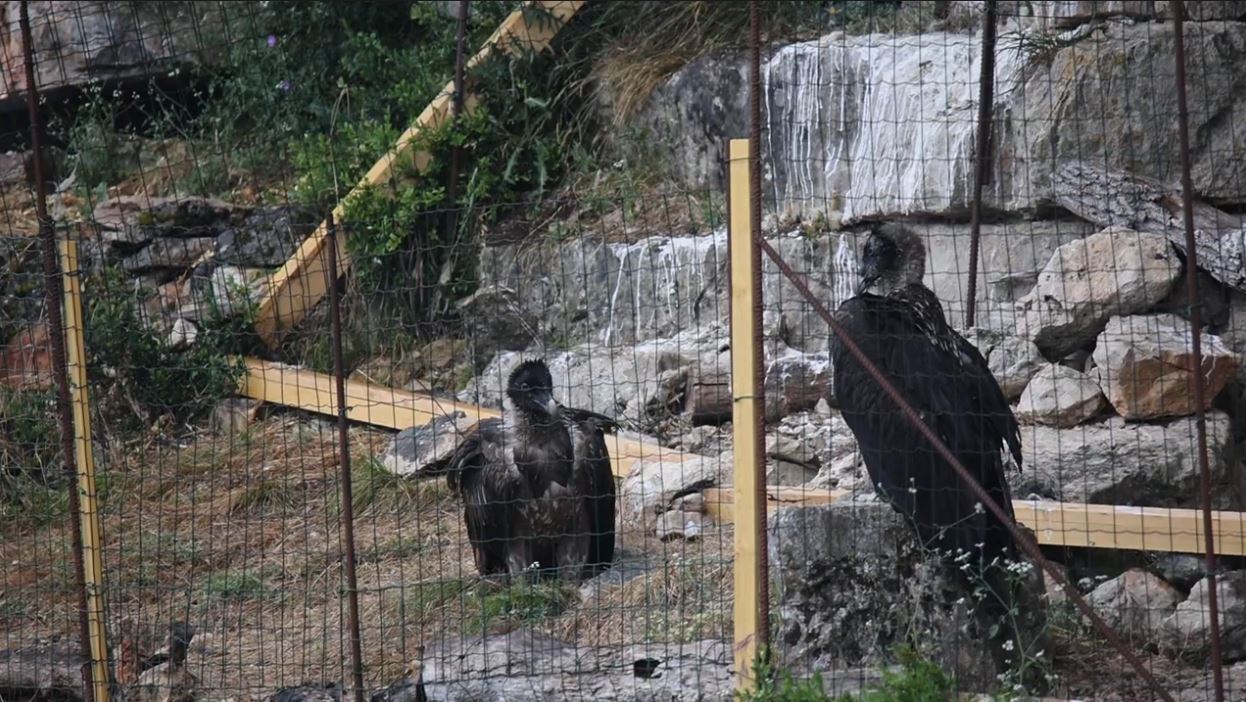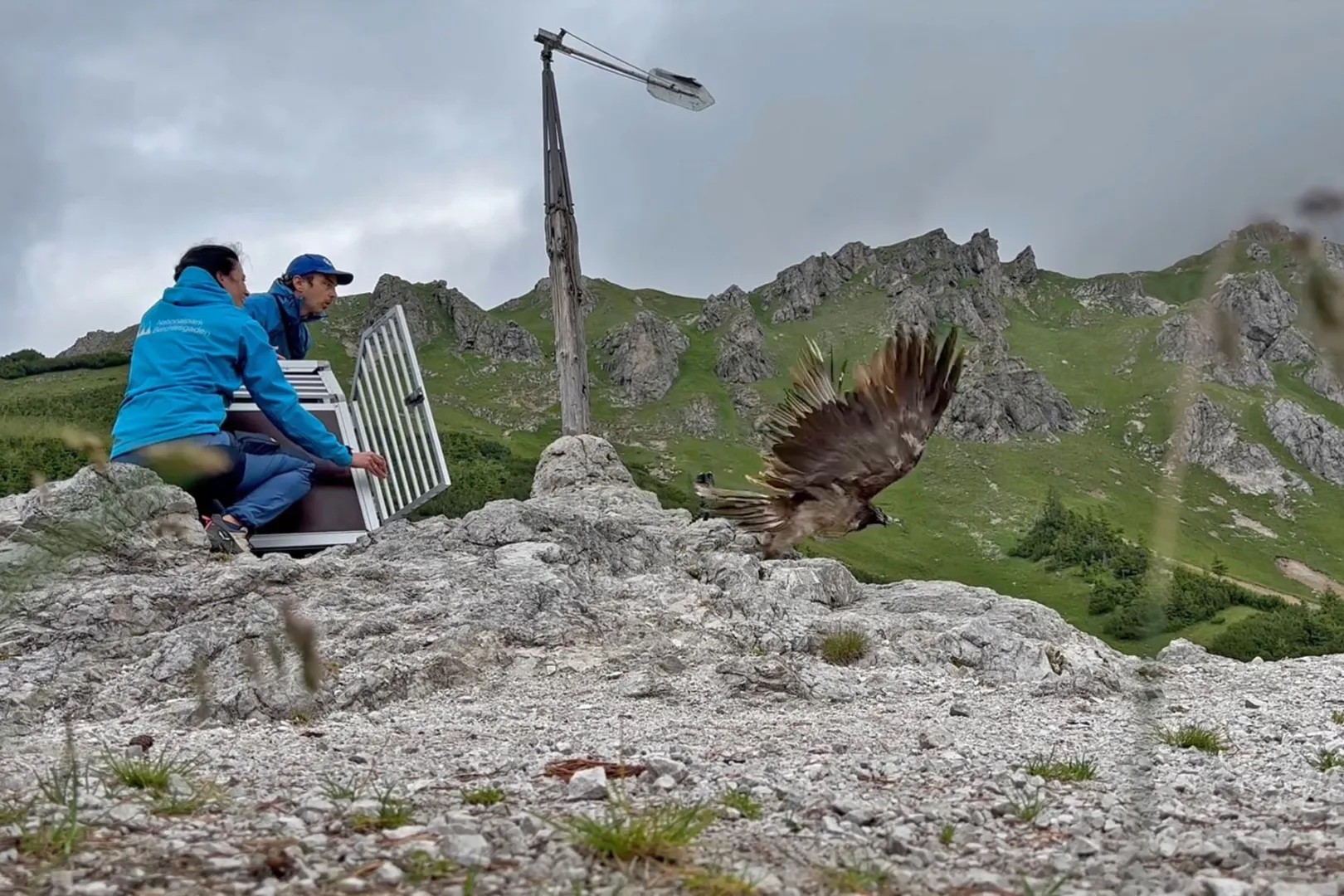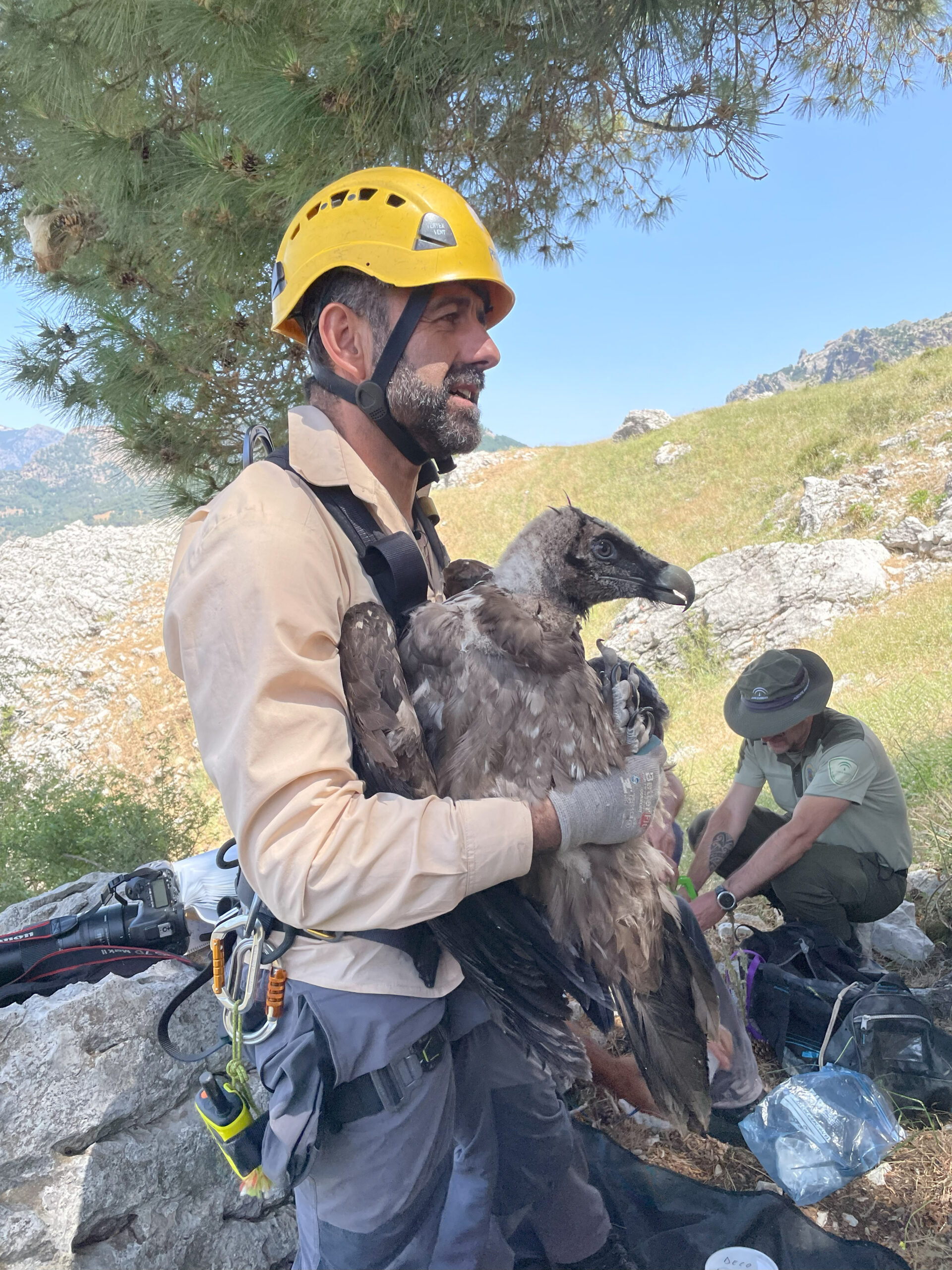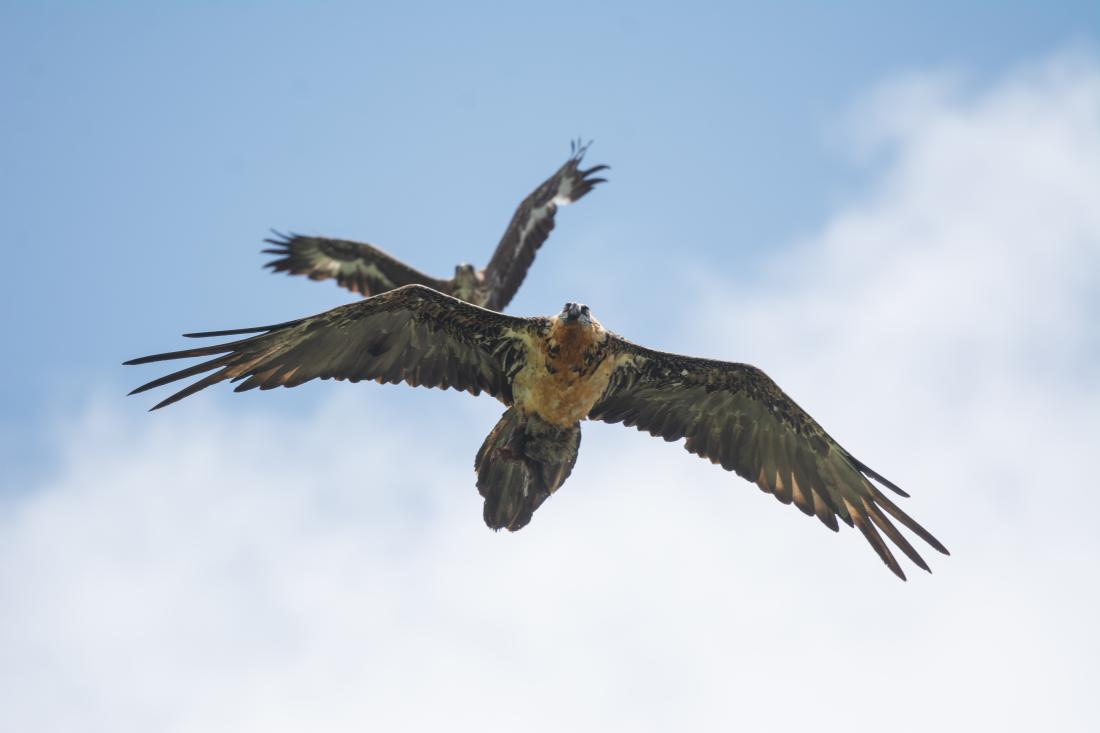As the Bearded Vulture (Gypaetus barbatus) breeding season 2024-2025 reaches full swing, the efforts to conserve the species through captive-breeding are once again in the spotlight. 63 eggs have been laid this season so far within the different centres of the EEP network and the first chick has already hatched.
The Bearded Vulture Captive Breeding Network, coordinated by the Vulture Conservation Foundation (VCF) on behalf of the European Association of Zoos and Aquariums (EAZA) European Endangered Species Programme (EEP) exemplifies collaborative conservation efforts, employing innovative strategies such as artificial incubation and chick rearing to overcome the species’ challenges and enhance breeding success.
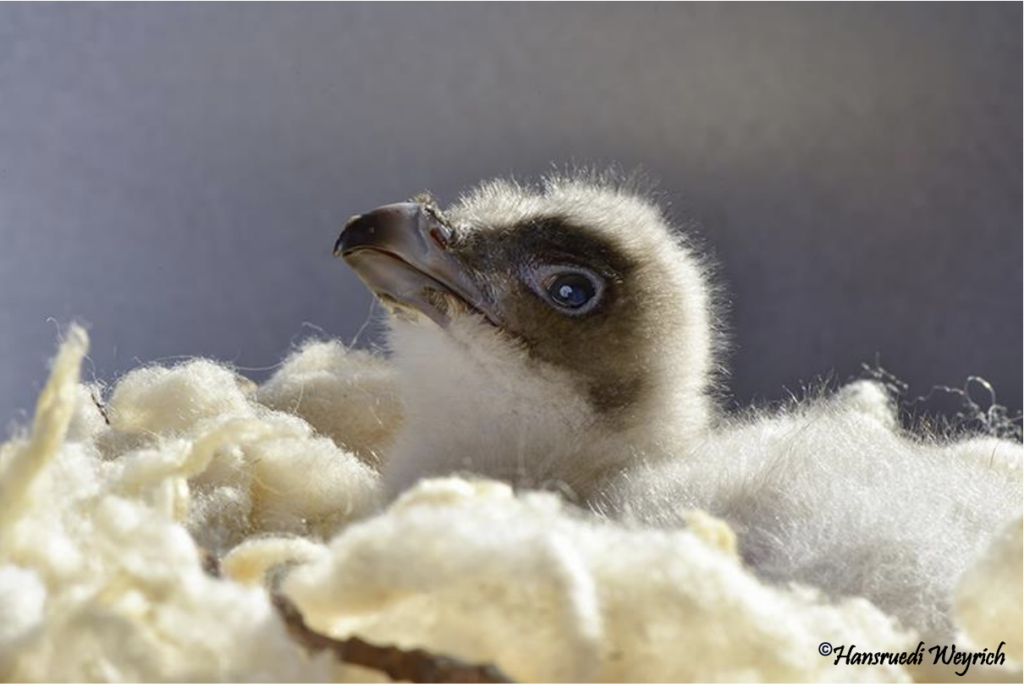
The role of artificial incubation
Artificial incubation has become an essential tool for mitigating the challenges associated with natural breeding, one of them being the phenomenon of cainism—an innate behaviour where the older chick aggressively eliminates its younger sibling. This natural but detrimental behaviour can severely impact the species’ reproductive success. To address this, the EEP employs artificial incubation techniques, carefully removing and incubating the second egg in double clutches. The chicks are later returned to their biological or foster parents, ensuring natural rearing while avoiding cainism and preventing human imprinting.
The artificial incubation process is guided by meticulous protocols designed to maximize success by preventing cainism but also by supporting eggs from pairs with prior hatching failures, behavioural issues, or physical disabilities and by managing eggs affected by external disturbances or improper natural incubation.
Meet Joseph and Marie Antoinette: A great example of artificial incubation success
Joseph and Marie Antoinette are the oldest breeding pair at Vallcalent Specialized Breeding Centre. The 36 -year-old female Marie Antoinette is a notable figure in the Bearded Vulture conservation. After an injury left her unreleasable back to wild, she was paired with Joseph and they became part of the captive-breeding programme. At first, despite several attempts, their natural eggs often broke because Marie Antoinette struggled with mobility issues in her left leg, which made it difficult for her to create a proper nest.
To address this, it was decided to use artificial incubation for their eggs, with a dummy egg provided to encourage natural behaviors. When an egg hatches, a chick is given to them, and the pair excels at rearing their young. Their care is exemplary, especially as Joseph often feeds his partner Marie Antoinette and their chick simultaneously.
Artificial incubation has been crucial for this pair, allowing them to raise many chicks successfully after the difficulties in the start.
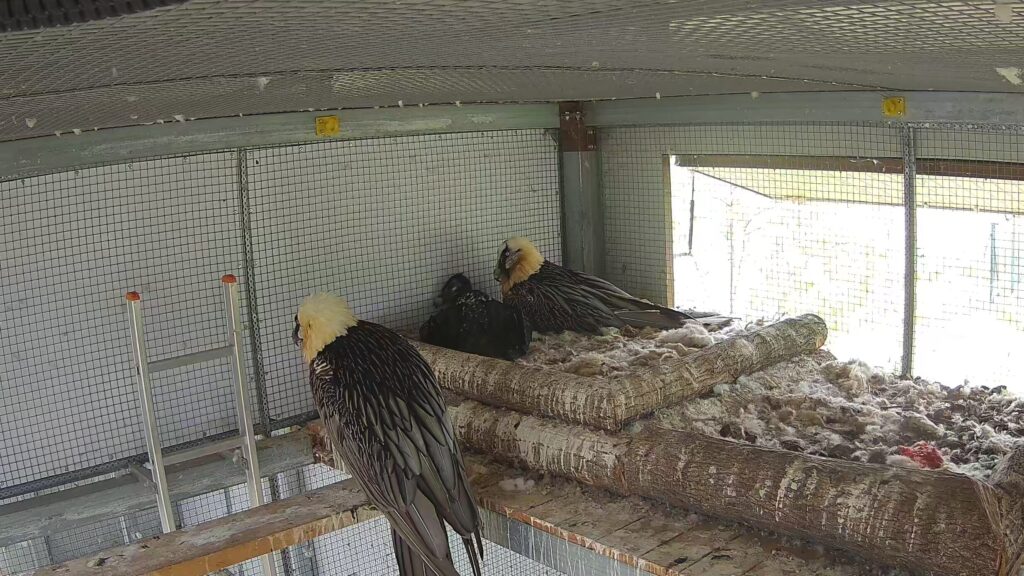
A comprehensive approach
Eggs are carefully monitored through weighing, candling, and assessment to ensure optimal conditions. Key techniques include mimicking natural incubation parameters, applying controlled thermal shocks, and managing a precise hatching process. Research has demonstrated that factors like daily non-incubation time variations and interruption duration do not significantly impact breeding success, challenging prior assumptions and underscoring the resilience of well-managed incubation techniques.
Artificial incubation protocol in a nutshell
The artificial incubation of Bearded Vulture eggs is conducted with meticulous preparation and careful management to replicate natural conditions. Before the egg is placed in the incubator, the incubator must be cleaned, disinfected, and checked to ensure functionality, with the ambient temperature maintained at 20°–24°C and humidity around 40%.The egg’s weight is measured, the shell is inspected for cracks or defects using candling (with imperfections sealed if necessary), and dirt is gently removed without damaging the protective cuticle.
During incubation, the temperature is maintained at 37.3°C-37.5°C, and humidity is adjusted between 25%–35%, with increases made if shell defects or excessive weight loss are observed, and raised to 80% after external pipping occurs. Eggs are turned 5–10 times daily, using incubators programmed to replicate natural irregular turning patterns and facilitate temperature fluctuation through air renewal. Thermal shock is applied by exposing the egg to outside temperatures 4 times daily for 5 minutes, with manual 180° turning, to support embryonic development and gas exchange without reducing internal temperature.
Seven to ten days before hatching, air cell displacement is tracked daily, egg turning is stopped, and the egg is positioned with the air cell upward. During internal pip, vocalizations and chick positioning are monitored via candling, and the egg is stabilized during hatching with increased humidity. These procedures, designed to closely mimic natural incubation processes, are critical for ensuring successful hatching and healthy chick development.
Read the full guidelines here: https://4vultures.org/wp-content/uploads/2025/02/Protocol-BV-artificial-incubation-and-chick-rearing-1st-version-February-2024.pdf

Insights from decades of conservation
Since its establishment in 1978, the Bearded Vulture EEP has successfully reared X juvenile vultures, contributing to reintroduction and reinforcement projects across Europe, from the Alps to Andalusia and Corsica. By building a European metapopulation, the programme promotes gene flow among isolated populations across Europe, North Africa, and Asia, ensuring the species’ long-term survival.
Learn more from this video what it really takes to breed Bearded Vultures in captivity and how the artificial incubation process looks like.
To protect the species, every chick matters. Through in-depth research and the application of innovative conservation techniques, the EEP continues to refine its approach to improve the breeding success even further.
Bearded Vulture EEP
The Bearded Vulture EEP, coordinated by the Vulture Conservation Foundation (VCF) on behalf of EAZA, continues to focus on enhancing the genetic diversity and stability of the European population. With a network comprising over 40 institutions, the EEP supports captive breeding that underpins reintroduction projects across Europe.

